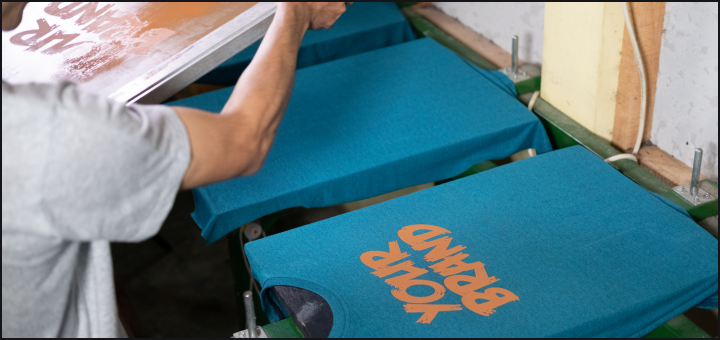Unlocking Unstoppable Success: Mastering the Thriving Indian T-Shirt Market in 2025
The T-shirt market in India is booming, presenting a wealth of opportunities for entrepreneurs and fashion enthusiasts alike. With a growing middle class and increasing disposable income, Indians are embracing T-shirts not just as casual wear but also as a form of self-expression. However, diving into this vibrant market requires a keen understanding of its dynamics. In this blog, we’ll explore the various facets of the Indian T-shirt market—from consumer behaviour and competition to marketing strategies and future trends. By the end, you’ll have a comprehensive overview to help you navigate this exciting landscape.

Table of Contents
Market Overview
Let’s kick things off by looking at the size and growth of India’s T-shirt market. Currently, the market is valued in the billions and is projected to grow at a significant rate over the next few years. Several factors contribute to this growth, including a youthful population, urbanization, and a shift towards more casual lifestyles. T-shirts, once merely a cloth type, have evolved into fashion statements, with consumers actively seeking unique designs that reflect their personalities.
When comparing the Indian T-shirt market to global counterparts, you’ll notice a distinct flair for local designs and cultural motifs. While international brands certainly have a presence, local players are making their mark with vibrant graphics and traditional art forms. This blend of modernity and tradition is a key trend that sets India’s T-shirt market apart in the global arena.
Consumer Behavior
Understanding consumer behaviour is crucial for any business, especially in a diverse market like the Indian T-shirt market. The demographics of T-shirt buyers reveal a wide range of preferences based on age, gender, and regional influences. Young adults, particularly those in the 18-30 age bracket, dominate the market. They are trend-conscious and eager to experiment with styles, making them a significant target audience.
What influences their purchase decisions? Price, quality, and brand reputation are paramount. Many consumers are willing to pay a premium for high-quality fabric and unique designs. Additionally, the rise of social media has empowered consumers to share their fashion choices, making it essential for brands in the Indian T-shirt market to engage with their audience online.
Competitive Landscape
In the competitive landscape of the Indian T-shirt market, you’ll find both local and international players vying for attention. Established brands like Allen Solly and Roadster coexist with newer entrants that focus on niche markets. While big brands enjoy the advantage of recognition, smaller brands often cater to specific themes, such as eco-friendliness or cultural motifs.
What’s intriguing is the emergence of local artisans and designers who are tapping into traditional crafts. They offer a unique value proposition by blending artistry with fashion, and creating T-shirts that resonate with cultural narratives. This diversification means there’s room for both established brands and innovative newcomers in India’s T-shirt market, creating a dynamic marketplace.
Sourcing and Production
Now, let’s delve into the practical side—sourcing and production. India is home to several manufacturing hubs, with places like Tirupur in Tamil Nadu leading the charge. This city is often referred to as the “Knitwear Capital of India” and produces a significant portion of the country’s T-shirts. However, while sourcing locally can reduce costs and lead to quicker turnaround times, challenges still exist.
Logistics can be tricky, especially when it comes to maintaining quality control during production. It’s crucial for brands in the Indian T-shirt market to establish strong relationships with manufacturers to ensure that the final product meets their standards. Additionally, there’s a growing emphasis on sustainability in production. More consumers are becoming aware of the environmental impact of fast fashion, making it imperative for brands to consider eco-friendly practices.
Also Read,
Revealed! The Truth about Sublimation Printing vs DTF Printing in 2024 – Prepare to Be Amazed!
Marketing Strategies
Marketing strategies play a pivotal role in capturing consumer interest in India’s T-shirt market. In India, digital marketing has transformed how brands connect with their audience. Social media platforms like Instagram and Facebook are ideal for showcasing visually appealing T-shirt designs. Engaging content, influencer partnerships, and user-generated posts can significantly boost visibility and drive sales.
Moreover, localization in marketing efforts is essential. What resonates with consumers in metropolitan cities may not necessarily appeal to those in smaller towns. Tailoring your marketing campaigns to reflect regional preferences and cultural nuances can make a substantial difference in your brand’s reception in India’s T-shirt market.
E-commerce and Distribution
The rise of e-commerce has reshaped India’s T-shirt market. With the convenience of online shopping, more consumers are turning to digital platforms to make purchases. Major players like Myntra and Amazon dominate the e-commerce space, but niche platforms are also gaining traction. Brands should consider a multi-channel approach, combining online and offline strategies to reach a wider audience.
Establishing a robust distribution network is equally important. Brands in India’s T-shirt market must ensure timely deliveries and reliable logistics to enhance customer satisfaction. The rise of cash-on-delivery (COD) as a preferred payment method in India highlights the need for flexible payment options that cater to diverse consumer preferences.
Maximize your business options more so by purchasing sublimation ink, a heat press and a printer all in one since it’s all you need to start producing quality personalized merchandise right away enhancing your brand!
Regulatory Environment
Navigating the regulatory environment is another crucial aspect of running a T-shirt business in India. Understanding the Goods and Services Tax (GST) and other applicable regulations is vital for compliance and smooth operations. Failing to adhere to these regulations can lead to significant penalties and disrupt business flow.
Additionally, it’s important to stay informed about labour laws and ethical sourcing practices. More consumers are prioritizing brands in India’s T-shirt market that demonstrate social responsibility, so aligning your business practices with ethical standards can set you apart from the competition.
Best Printer for starting T-Shirt Printer Business – EPSON L130
Future Outlook
As we look to the future, India’s T-shirt market shows no signs of slowing down. Predictions suggest continued growth driven by changing consumer preferences and an increasing focus on sustainability. Emerging trends, such as customizations and personalization, are also gaining momentum. Brands that can innovate and adapt to these shifts will likely thrive.
The importance of resilience and adaptability cannot be overstated. Market dynamics can change rapidly, and staying attuned to consumer feedback and industry trends is essential for long-term success.
Final Thoughts
In summary, understanding India’s T-shirt market requires a multifaceted approach. By grasping market dynamics, consumer behaviour, and effective marketing strategies, aspiring entrepreneurs can carve out a niche in this competitive landscape. As you embark on your journey, remember to stay passionate but also strategic. The growth potential is immense, and with the right knowledge and mindset, your T-shirt brand could be the next big thing. So, roll up your sleeves, dive in, and start cracking the code!
Stay Healthy, Stay Safe, Jai Hind!






